Powdery mildew usually does not kill the plant if treated, or removed, but reduces photosynthesis because the mildew is preventing as much photosynthesis as you would normally get and that reflects on the fruit production. If powdery mildew remains untreated, especially on tender vegetables, it spreads upwards, and even to other plants and can kill the whole plant. Let us take a look at how to tell if the leaf has powdery mildew and what you can do about it.
One way to tell if your leaf has a powdery mildew or it’s just a natural variegation is to rub a finger on what you think might be a mildew, and if it’s not coming off, it means it’s a part of the leaf, not a powdery mildew. If on the other hand, it feels powdery, it comes off, you can scrape it off of the leaf it is a powdery mildew. There is a difference between a natural leaf pattern variegation and powdery mildew. Sometimes a variegated leaf pattern of zucchini confuses lots of people, especially new growers.
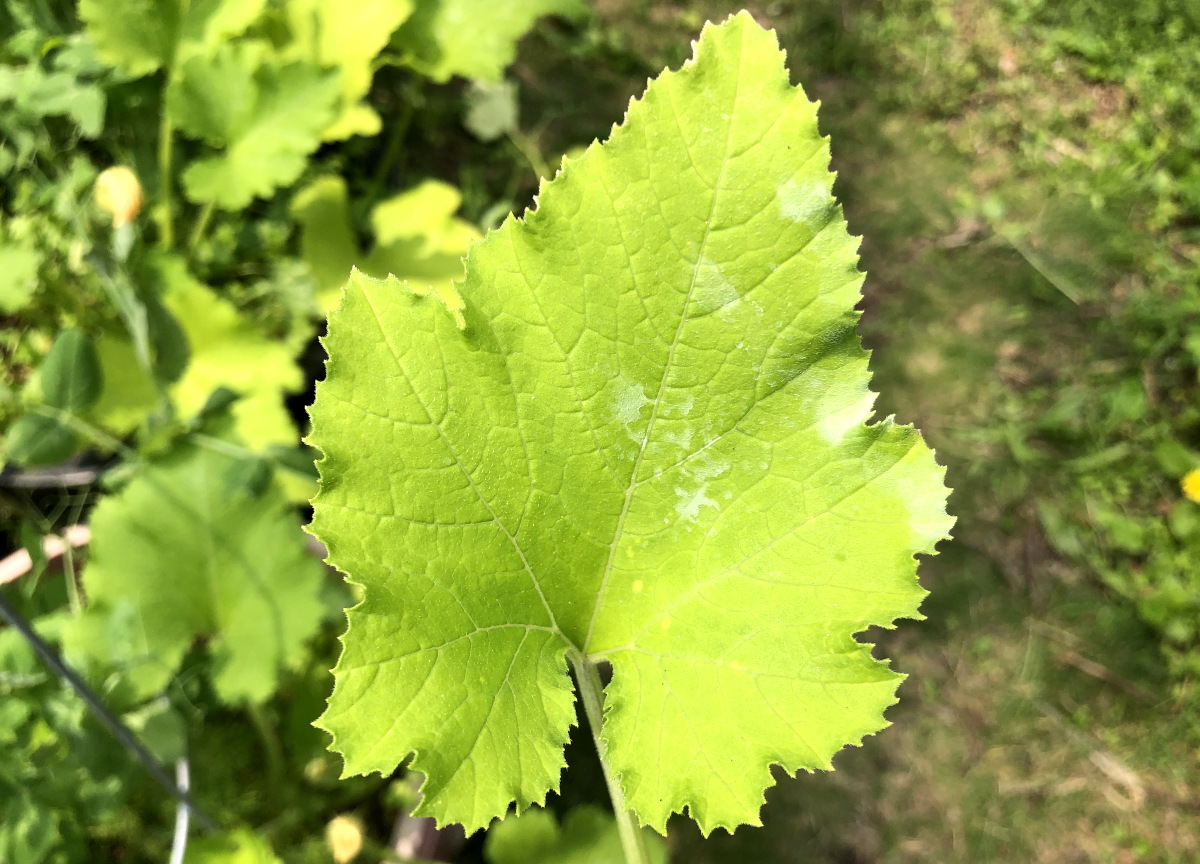
How to reduce powdery mildew
Remove the leaves that are infected with the mildew as soon as you spot the mildew on the leaves. Promote air circulation by thinning the leaves. Remove leaves that overshade each other or lay on each other. Trellis your vining plants as there is much more humidity on the ground and disease pressure than the trellised plants. By plants with resistance to disease. In cooler temperatures use applications of horticulture oils. Mulch your garden beds to prevent splashes on leaves during watering or rain. By mulching and preventing splashes and fungus spores, the plants and foliage will remain clean and dry, and remain much healthier without dirt on the leaves. It is also much easier to spot eggs from a squash borer.
Vegetables most susceptible to powdery mildew
Squash, zucchini, cucumbers, melons, and grape wines are most susceptible to powdery mildew. Peas, lilac, roses, and other trees and shrubs can also get affected.
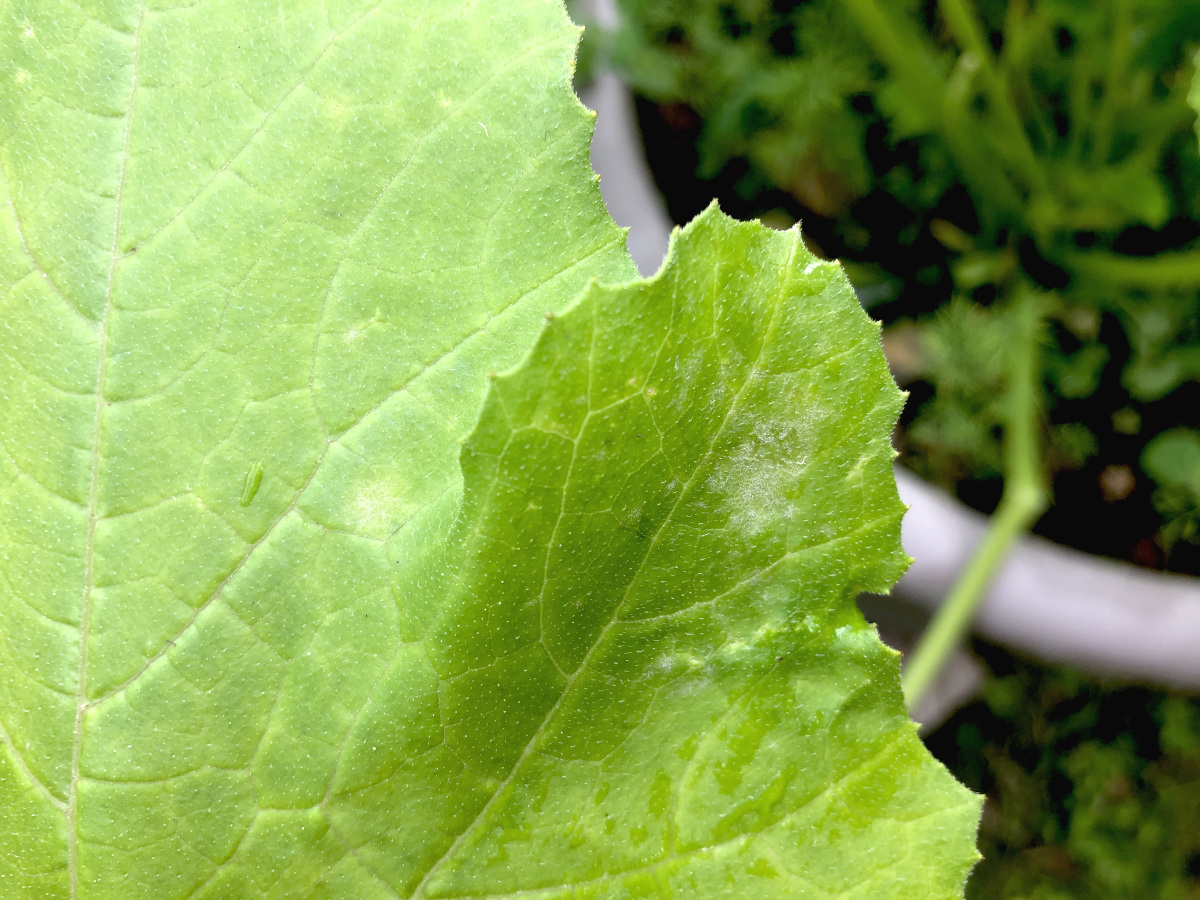
When and how to plant cucumbers
What is powdery mildew?
It is a fungal spore that travels in the air, you cannot really stop it, especially when the humidity leaves are high. It feels and looks like fine powder, hence the name. It thrives in humid, wet, and cooler or moderate temperatures.
I inspect my zucchini especially when humid and overcast weather, and after a couple of days of rain. This kind of humid and wet weather creates a perfect environment for mildew to form on leaves. As soon as I spot any spots of mildew, I remove the leaf using sharp garden pruners or just by hand. After I am done pruning, I like to disinfect my pruners with isopropyl alcohol spray. I never ignore any mildew spot shall it be ever so tiny. I immediately remove any leaves infested by it. This usually helps keep my plants mildew-free and in check.
How to prevent powdery mildew
Do not plant plants too close together, especially those that are more susceptible to mildew. Around the plants planted too close together, the airflow will be low which will promote growth and spread of powdery mildew. When planting, space the plants with good air circulation in mind. Prune plants to promote good air circulation and allow good air circulation. Prune especially lower leaves and crowded leaves at the bottom where the humidity is mostly accumulated and creates the best environment for the powdery mildew to start and then spread all the way upwards. Lack of water will lead to powdery mildew in susceptible varieties. Do not let foliage stay wet and water at the base of the plant. If using an overhead sprinkler, be strategic and use it in the morning when it has plenty of time to evaporate off of the foliage.
I remove leaves that touch the ground and those that are in the way when I water at the base of the plant. I use a long sprayer wand to reach the base of the plants during watering. I also remove leaves that hang low and get splashes of water during watering. By removing the lower leaves, I am able to reach wherever I need to in my garden bed. I like to keep the foliage dry as much as I can in my humid, zone 6 to discourage the formation and growth of the powdery mildew as much as I can. Removing the overgrowth also helps air circulation around the stem as well as through the whole plant.
How to treat powdery mildew
Treat powdery mildew with baking soda solution. Mix 1 tablespoon of baking soda, 3 tablespoons of oil in 1 gallon of water, and a few drops of dish soap. Test it first on how the plant reacts before you spray the whole plant. Milk can also be used to treat powdery mildew. Mix one part of the milk with 2 parts of water and spray the foliage on a warm day. It will smell bad, but it does a good job of holding off the fungus.
If I need to spray anything in my garden, I use a multi-purpose garden sprayer. I have 1 gallon one, which is easy to operate and carry around the garden. You can fill it with anything you need, from fertilizer to any mixtures of your own. After that, I just rinse it with water and dish soap and it is ready to be used again and again. The one I have serves me well for 4 years and still looks great. I would say if you have a medium to larger garden you will surely find a use for a multi-purpose garden sprayer. It works better than spray bottles, because of its long nozzle especially when you need to get under the foliage in weird angles and to reach further.
How do I know if my plant has powdery mildew?
A plant has powdery mildew if the leaves, foliage, and stem have white, powdery spots with blurred edges that feel powdery when touched with a finger and come off when scraped off of the plant. The foliage or spots on leaves might look as if they were dusted with white powder.
Below, I included a photo of a variegated leaf. Most variegations on foliage start at the vein of the leaf and spread outwards and away from the vein and have sharper edges. Variegation does not feel powdery and does not come off when rubbed. Powdery mildew, on the other hand, starts and appears anywhere on the foliage or stem, has blurry edges, and comes off when rubbed.
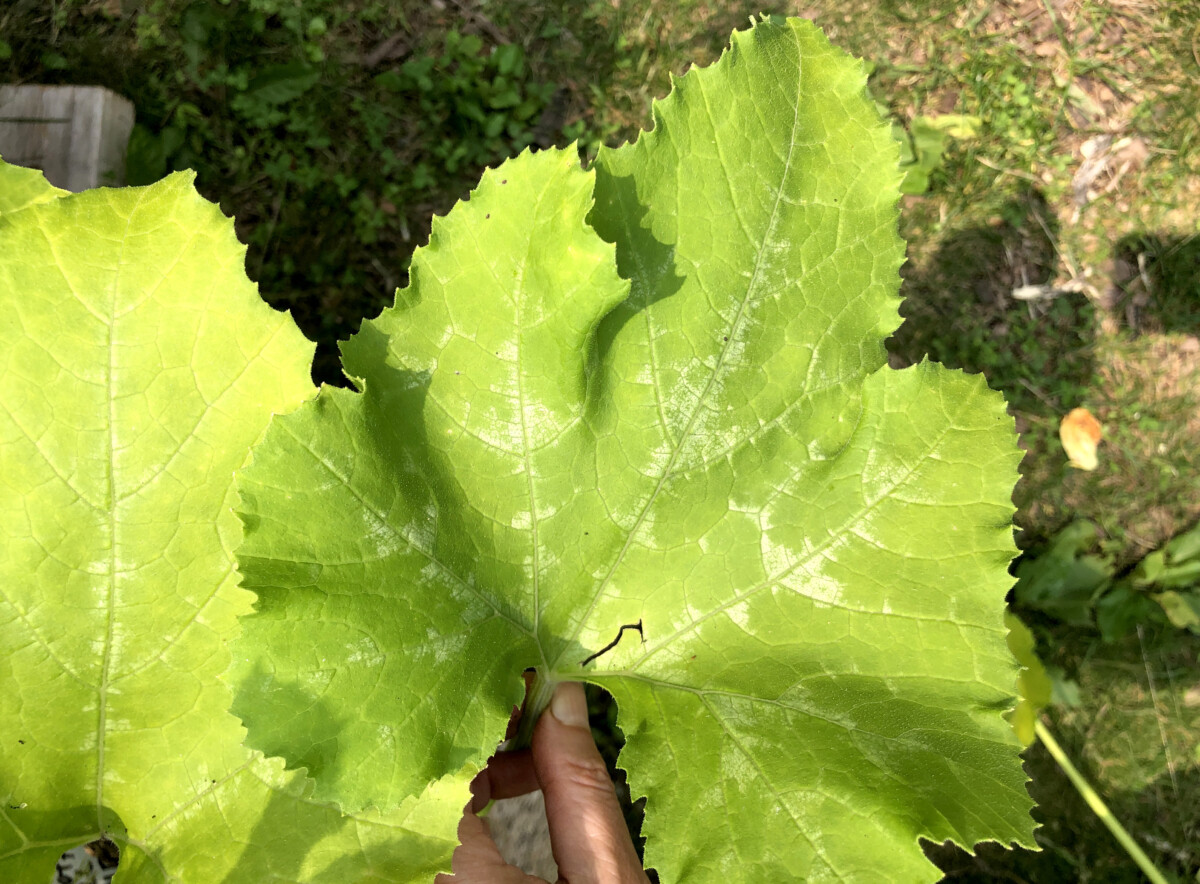
What does powdery mildew look like on leaves?
Powdery mildew on leaves looks like white to gray dust or powder sprinkled on the whole leaf or topically. The powder comes off when rubbed and feels powdery.
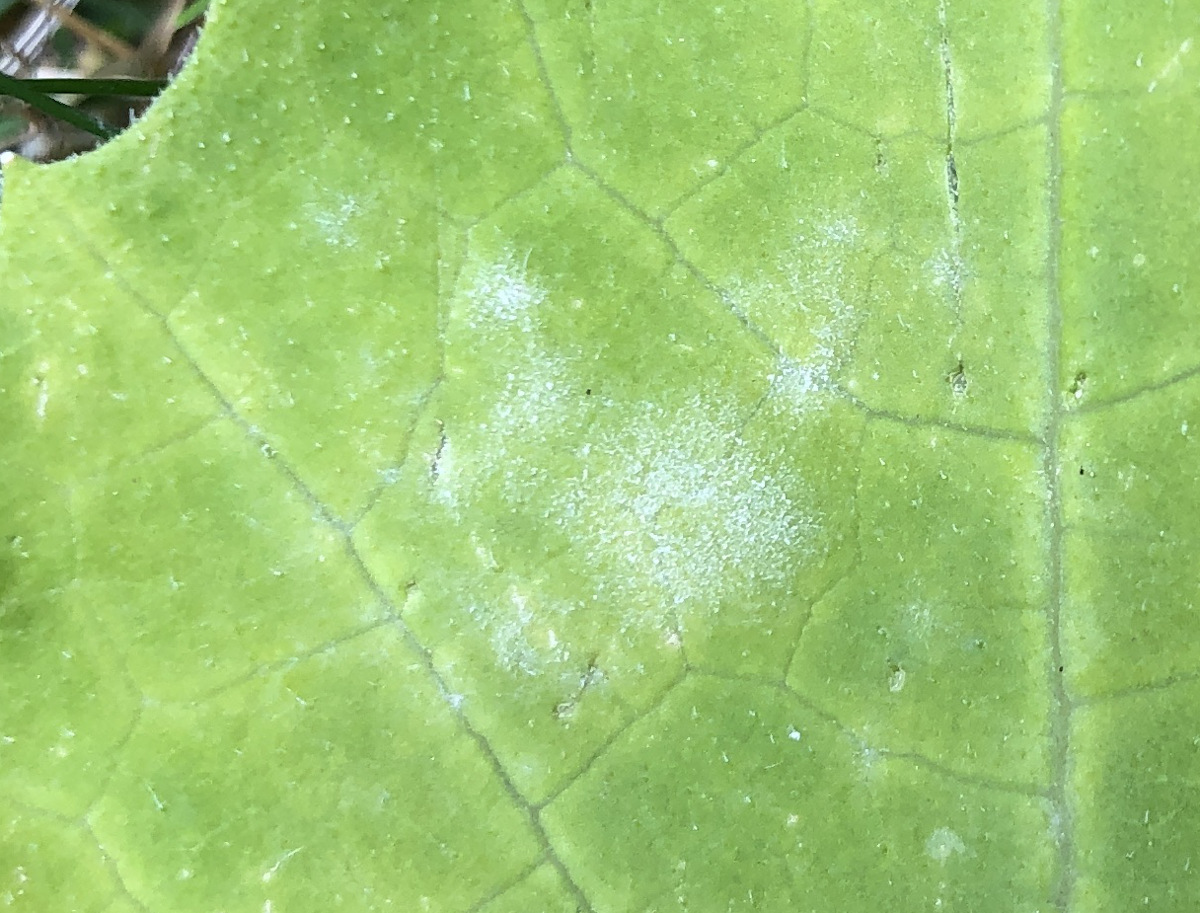
Can plants recover from powdery mildew?
Otherwise healthy plants can recover from powdery mildew with help. Remove the leaves affected by the mildew immediately to remove spores, prevent the spread, and promote air circulation. If needed spray with 1 part of milk mixed with 2 parts of water or with a mixture of 1 tablespoon of baking soda, 3 tablespoons of oil in 1 gallon of water, and a few drops of dish soap.
TIP: Treat powdery mildew as soon as it is spotted. If left untreated or not removed, a day or two makes a huge difference especially when left in perfect humid and cooler conditions for the mildew to expand and spread. Mildew spreads by spores that can travel by air, therefore it is very easy for it to spread from leaf to leaf and from an infected plant to a healthy one.
Does overwatering cause powdery mildew?
Overwatering, watering overhead, and humidity can cause powdery mildew and create an ideal environment for the growth of the mildew. Water your plants at the base thoroughly as needed but do not overwater and do not them sit in soggy soil.
A GOOD READ: How and when to water vegetable garden AND When you should not water your garden
Should I cut off powdery mildew leaves?
Yes, leaves affected by powdery mildew should be removed as soon as the mildew is spotted on the leaves and discarded. By removing the affected leaves the air circulation will increase which will help the plant’s foliage stay dry and push back the spread of mildew.
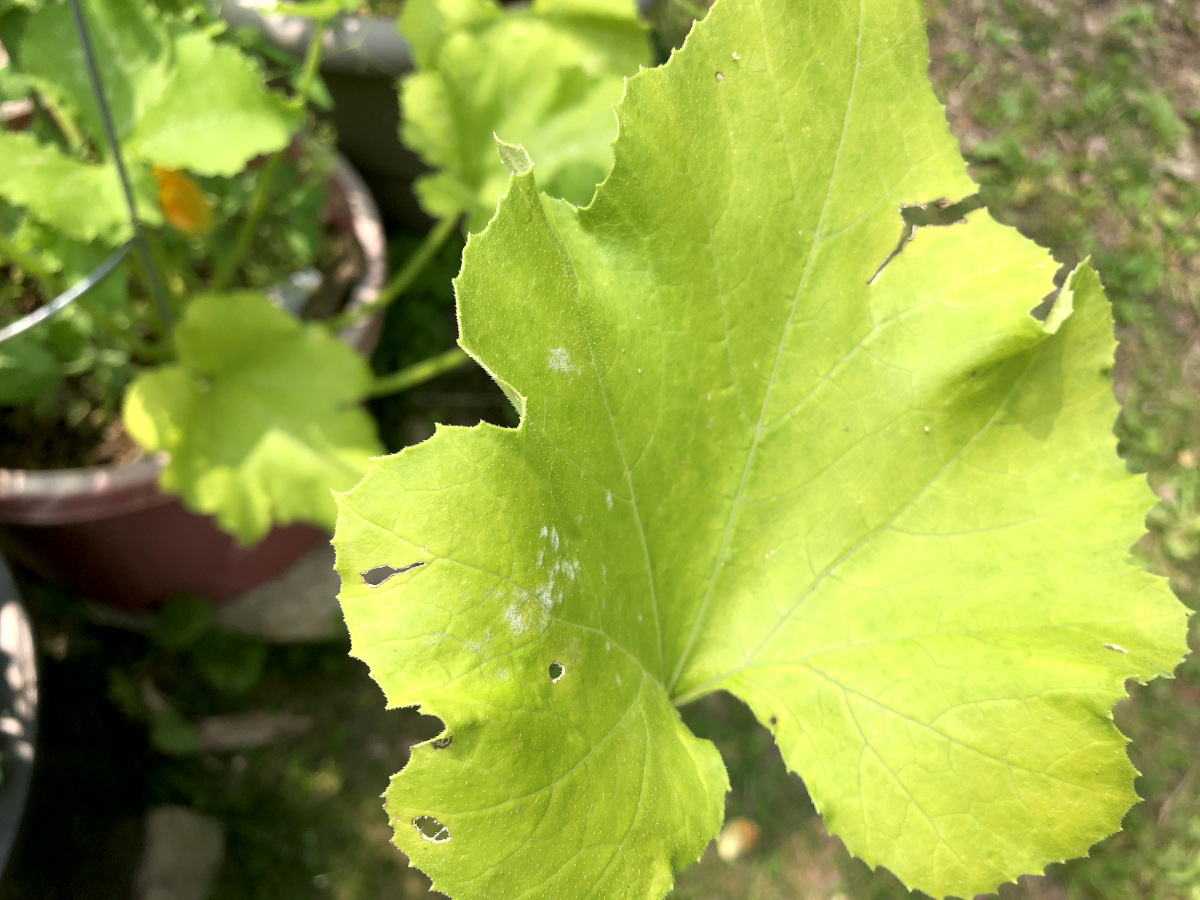
What happens if powdery mildew is left untreated?
If powdery mildew is left untreated the mildew will spread to the whole plant and will reduce photosynthesis of the plant which will result in very low production. Untreated mildew will also spread spores to other plants. Untreated powdery mildew will result in the death of the plant. The sooner mildew is treated the bigger chance has a plant to recover.
How do you stop powdery mildew from spreading?
Powdery mildew can be stopped by removing the infected leaves and stems of bugs. This will help stop fungal spores from spreading to the whole plants and neighboring plants as well. If needed treat the plant with a mix of 1 tablespoon of baking soda, 3 tablespoons of oil in 1 gallon of water, and a few drops of dish soap. Or treat the plant with milk by mixing one part of the milk with 2 parts of water and spraying the foliage on a warm day.
Does powdery mildew come back every year?
Powdery mildew might come back next year if the infected leaves and parts of the plants are left in the garden. The fungi can survive the winter in foliage and stems on the ground. The best is to remove, collect and discard all the affected parts of the plant to ensure the removal of most of the spores.
I have seen too many new gardeners all freaked out about their zucchini’s variegated leaves asking the question about powdery mildew, since they have never seen it. This inspired me to write this article to help those who have heard something about the powdery mildew but have never seen it in person and never dealt with it. It is good and very comforting to have some points to go through to check whether there is powdery mildew on the leaf or if the leaf is variegated and very healthy. I hope this article will be of great help to you and expand your gardening knowledge. If the mission was accomplished in this article and you found it helpful, please leave a comment to encourage others to keep on reading and also expand their gardening knowledge.
How to protect vegetable garden beds
Best time to start a fall garden

